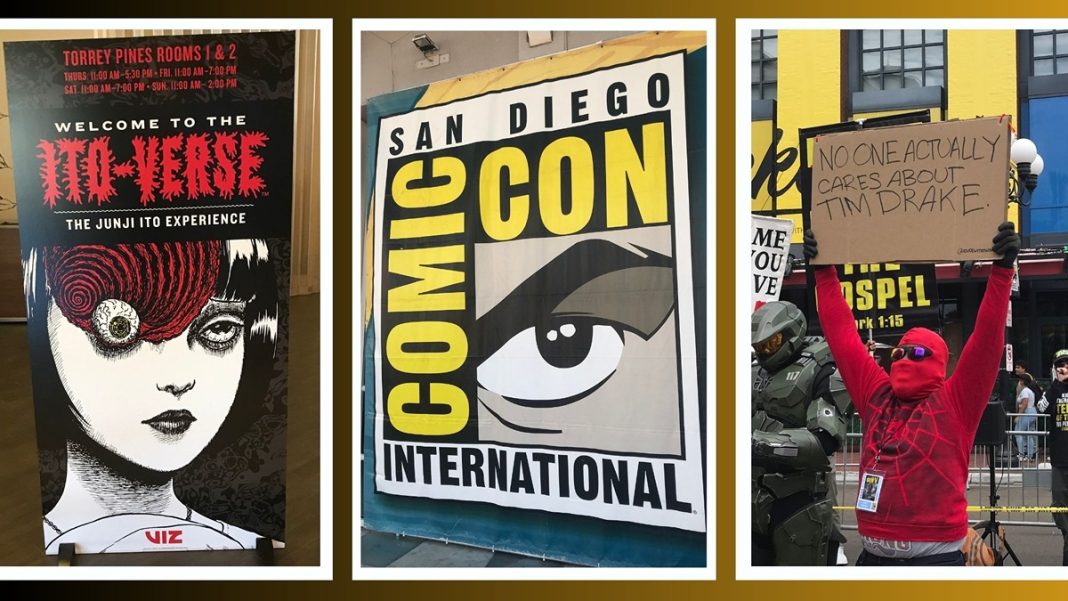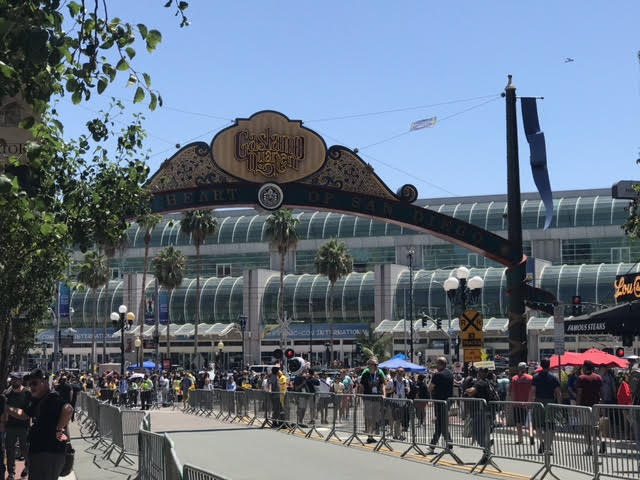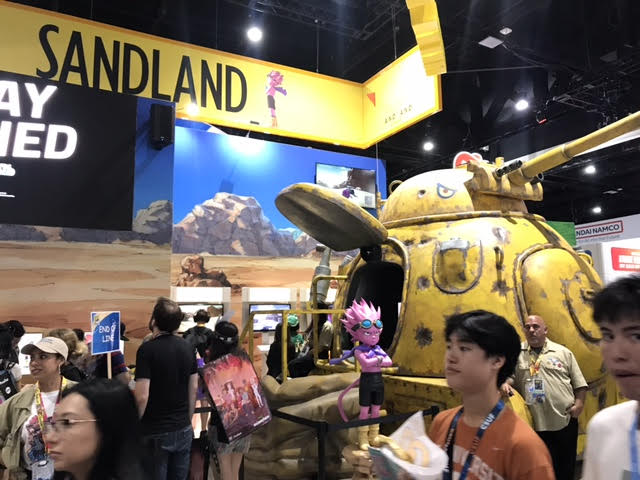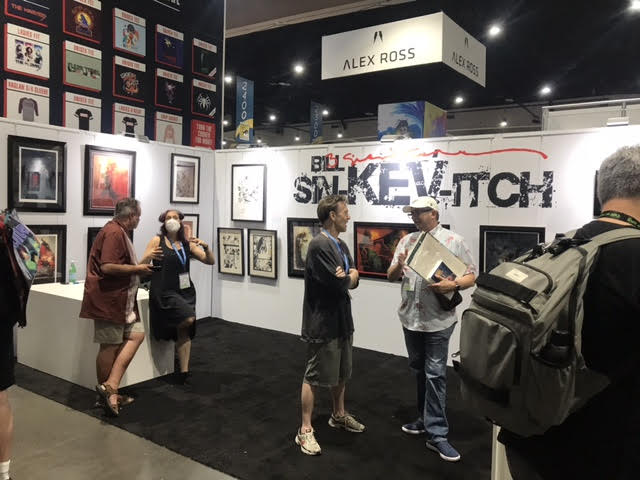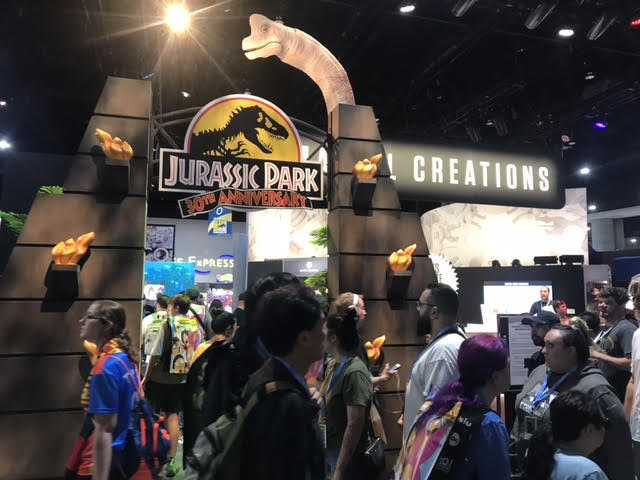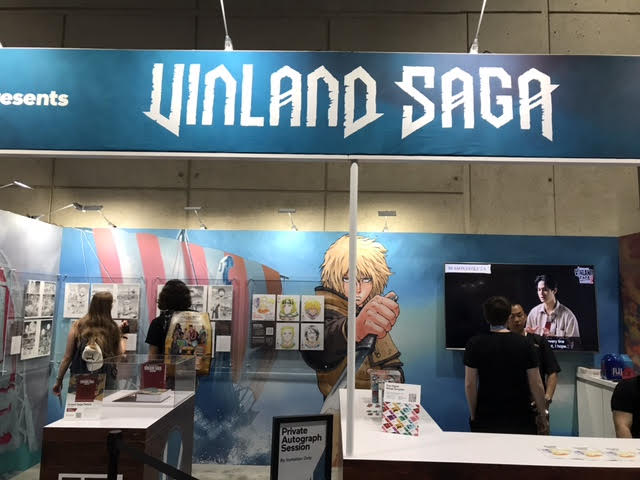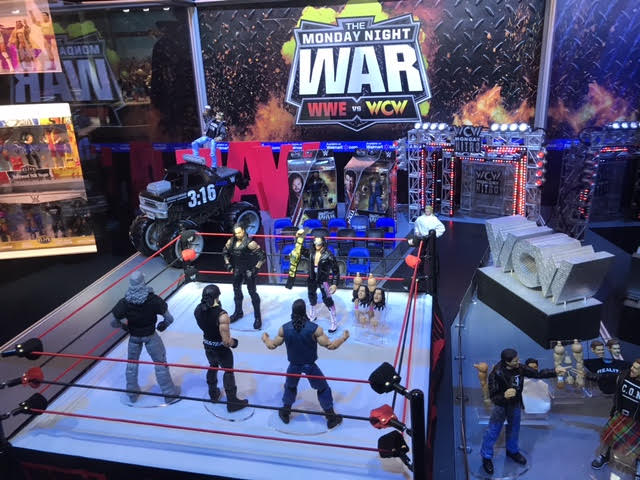San Diego Comic Con is often thought of as the Mecca of comics, a holy place of intense pop culture worship with different altars spread out through the convention for people to revere. I certainly considered it as such, a destination I needed to check off if I wanted to consider myself a true fan of comics. As such, I was always left in frustration when plans for attending it fell through. This year, the pilgrimage was finally possible, an opportunity I seized with some hesitation, though. That is, until I learned that the Hollywood actors union SAG-AFTRA would join screenwriters in their strike for better contract and working conditions regarding AI and streaming royalties.
This meant that this year’s SDCC was going to be different, unique. With actors and Hollywood-inclined famous people bowing out due to the strike, it meant SDCC 2023 was going to be all about comics. It’s what pushed me to make the final decision to attend. That and Junji Ito.
Before going further, a warning. You’ll hear a fair amount about two other conventions that left a mark on my con-going experience: New York Comic Con and Barcelona’s Salón del Cómic. NYCC is a sentimental favorite, as it was the first big convention I ever attended, and it was a shock to the system (which, upon reaching the show floor for the first time, resulted in being overwhelmed by the sheer size of it, retreating to pull myself together by eating an $8.00 grilled cheese sandwich at the food section, and then taking the dive into the mass of fans and cosplayers.)
Salón del Cómic is my favorite convention, period. It’s a giant art show filled with artist-specific installations and mini-exhibits made to look like you were entering the comic worlds of the artists and creators honored at the event. A Will Eisner installation looked like a huge page from a Spirit comic, while local artist sections glowed with the vibrant colors of the fantasy and sci-fi landscapes they were known for. Comics were the leading voice. Everything else came second. They also had a science fiction exhibit that featured original Moebius pages and props from Guillermo del Toro’s Hellboy movies. Gaming tournaments also took place and had generous space afforded to them.
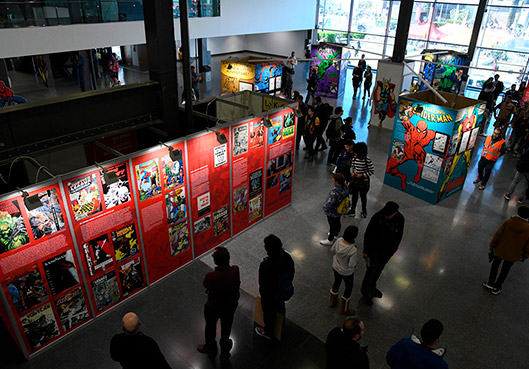
SDCC reminded me of these two conventions, worlds unto themselves. On the one hand, it had a similar grand and overwhelming sense of spectacle as NYCC (though multiplied a thousand times over), and on the other it carried the playful and inventive art-first vibes of Salón del Cómic.
Unlike NYCC, San Diego’s convention boasts a larger space that stretches on and on to the point that walking all of it from one end to the other for the first time seemed like a two-day endeavor. Once it happened, it became more manageable. You start identifying the spots you’ll be gravitating towards the most and largely stick to them. NYCC is a giant rectangle that pulls people to its center, right about where Marvel’s booth and the giant t-shirt store can be found, and it can feel crammed very much to its detriment.
There’s a difference between crowded and crammed. I found SDCC was crowded, but never to the point of feeling like I was going to be stuck for minutes at a time in one spot before I could move in the direction I wanted (something that happens more often at NYCC). Then again, my situation was unique because of the strike, which more than likely affected attendance numbers.
Also unlike NYCC, mostly because of space, SDCC had larger themed booths complete with walking space and multiple entry points. Each booth, most notably those for WWE’s action figures and Star Wars, came across as legitimate stops with welcoming worlds to explore. They incentivize taking the time to really look through. The 30th anniversary Jurassic Park booth was another highlight, celebratory in nature with the color palettes and designs we’ve come to expect from the franchise. The same can be said of Lego’s booth, which was made to look like a Blockbuster rental place.
In essence, these booths were like little museums with more enthusiastic gift shops. Though their purpose was to sell stuff, just walking into them and enjoying the things on display was rewarding enough. This reminded me of Salón del Cómic more than NYCC. Salón is basically a series of experiences that prioritize the appreciation of the art displayed on each section.
In Salón’s case, celebrating the medium of comics takes the lead, with sales not being shoved in the faces of congoers. Not that they’re more noble than any other convention, Salón wants you to buy till your wallet’s dry, but it’s clear there that presentation does a lot more of the legwork when it comes to getting people to spend money.
And then we have SDCC’s Junji Ito experience. This is where my con worlds collided to make for one of the best experiences I’ve ever had in a comic book event. Hell, the best experience I’ve had in a comic con. The Japanese Master of Horror, Junji Ito, became the soul of the convention. His presence was unavoidable. From the panels he had at the San Diego Library and at the convention center, to the instant classic art exhibit titled “Welcome to the Ito-Verse: The Junji Ito Experience”, there was no denying SDCC should’ve probably been called ItoCC. He was that important to it.
The Ito exhibit was the closest I’ve been to having the experience I had at Salón del Cómic in the United States. It was intimate, creepy, and masterfully well-curated. It held more than 90 original pages from some of Ito’s most iconic works. I was lucky enough to attend the reception party for the exhibit and Ito himself was there talking to fans and meeting industry people, among them Jim Lee. His wonderful translator Junko Goda made communication with Ito a possibility for non-Japanese-speaking fans and she did a great job conveying our excitement when speaking to him.
The whole time at the exhibit felt like a rare but special convergence of comics cultures, the kind that proves the medium shares more than we give it credit for and that it harbors immense amounts of love for it that crosses oceans and country lines. Anyone on the verge of losing faith in comics and its power had only to go to the exhibit and see how uplifting having all those pages there was, despite how terrifying the things illustrated on them were. It was the beating heart of the convention.
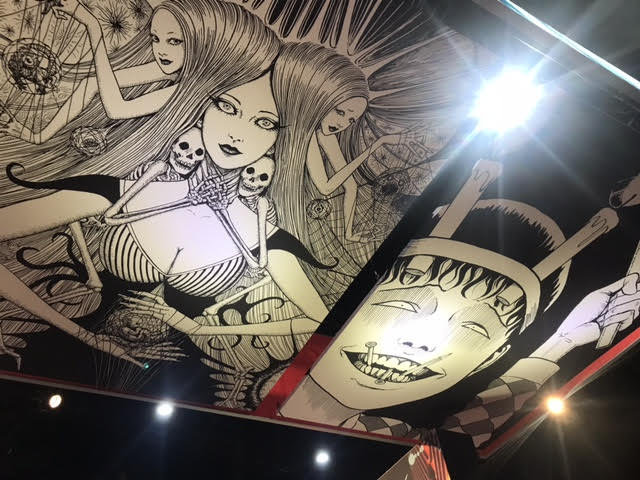
The exhibit model is something that all big conventions should aspire to. Celebrating artists and creators with their body of work, in original pages and scripts, available for anyone to see is a privilege everyone should be exposed to. Ito’s exhibit was in the Marriott right next to the convention center. Next time, I hope it makes it to the show floor, so more people can engage with it.
The few negatives from SDCC didn’t detract in the slightest from my enjoyment, but some are worth mentioning. First, this con’s Artist Alley is nothing but sad. It’s small, cramped, and barely there. It’s as if the con were duty-bound to have one and so it was given the barest of minimums to make happen. It was in front of the giant Funko booth, which sucked away what little life the Alley had left. NYCC and Salón are way ahead of the curve in this, to the point it’s not even fair to compare.
On top of that, publishers like 2000AD, Dark Horse, and IDW barely had any comics on sale. Their selection was cut to just a few items. They were mostly there for display and announcements. Instead of pulling a page from Salón’s carefully constructed exhibits and booths, these publishers went with a few display stands or giant posters and sets people could take pictures in. They felt lifeless.
This was disappointing, as in years past, and in other cons, these booths have had a large selection of their libraries available for purchase. It’s a loss to the show and it was sorely missed, especially as this convention lacked the Hollywood presence that pulled everyone away from the show floor.
The publishers that did have comics to sell, like Mad Cave, Image, and Fantagraphics, seemed to have a steady flow of customers and people seemed generally happy to have books there for consideration, along with artist signings. Viz Media alone proved that having books and other items for sale draws in crowds, and that’s without mentioning that their booth had a few samples of original Ito pages and blown up displays of his most disturbing art all over it.
In fact, Viz is a great example of how to do a comic con booth right among big publishers. Vinland Saga also boasted an impressive booth with original art from the manga. Interesting that the most impressive and well-rounded booths came from the world of manga.
The whole ticketing system for con exclusives, lines, and limited comic books was also a bummer. There are few things as deflating as hearing the book you wanted and hoped to get your hands on at the con was only available through an online raffle that happened weeks before the convention started (like Titan did with the new Jamie Lee Curtis book Mother Nature). A better system must take the place of ticketing. It’s something that closes off certain experiences from congoers.
On the brighter side, the panel selection was massive and it boasted a ton of comics-specific topics that were already vast when Hollywood was still in the game. There was something for everyone, and there was no shortage of programming.
It bears mentioning that, while SDCC proved it doesn’t need Hollywood to succeed, I’m wondering whether the same can be said if toys and collectibles ever decided to skip it. Booths like Tamashii Nation and NECA were among the busiest on the floor and their lines were often capped for the day early. A massive amount of money circulates there alone, so getting a better look at how important collectibles are for the convention is essential to understanding the comic con experience.
So, did SDCC become my new favorite? Did it beat NYCC and Salón del Cómic? It certainly beats NYCC in size, vision, and scope alone. Salón del Cómic, not so much. It comes very close, though. The Junji Ito experience has to be given credit for cutting it so close. I think Salón is more dedicated to having a comics-first show than SDCC, which tries to be all of pop culture all the time rather than comics first and everything else second. Having said that, SDCC is life-changing, and it completely reconfigures your expectations of what cons are and what they can be. More importantly, it leaves you wanting to come back for more as soon as possible, something I hope to do next year. It’s the kind of experience that makes you feel like you need to go every year. I’ve certainly got that need now — the need for more Comic Con.
Miss any of our earlier SDCC ’23 coverage? Find it all here!


